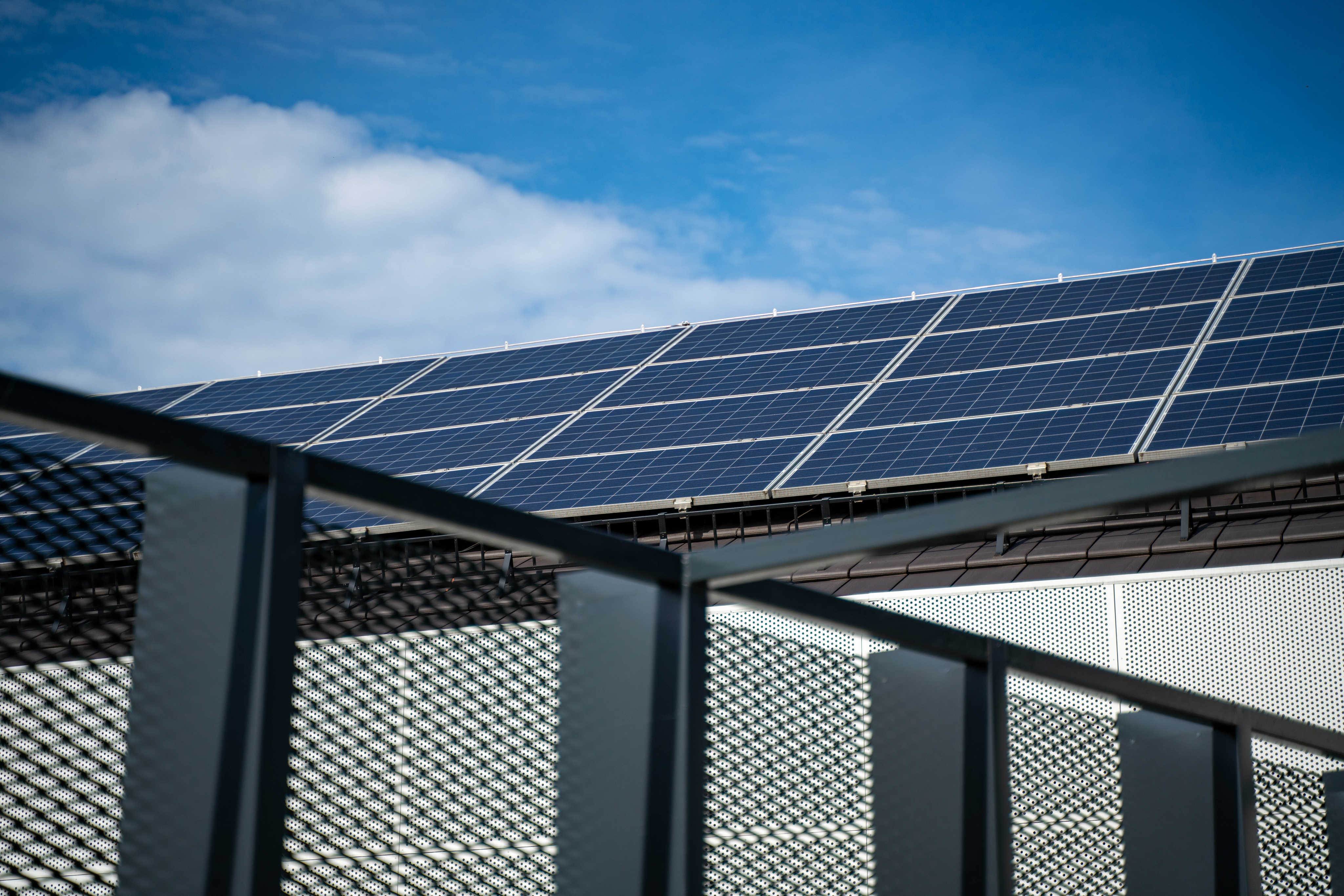
Are you worried about your rising energy bills? 😰 Want to reduce your energy costs but don't know where to start? Don't worry, we have the solution for you! Performing an energy audit yourself at home can save you money and help the environment. 🌿💡
In this article, we'll guide you step-by-step through how to conduct an effective energy audit. From understanding the concept of an energy audit, preparing the process, to analyzing the data and suggesting savings - we've got you covered.
You'll be amazed at the significant improvements you can make with just a few small changes! Let's explore 6 important steps to performing an energy audit yourself and optimizing your home's energy usage. Let's get started! 🚀

Understanding Energy Audits
Definition of Energy Audits
An energy audit is a comprehensive assessment of a building or facility's energy consumption. Its primary purpose is to identify opportunities for energy savings and efficiency improvements.
The process involves collecting data, analyzing key energy-consuming systems, and recommending improvements.
Tools and Equipment Needed
To conduct an effective energy audit, you will need to equip yourself with a number of important tools and equipment:
Energy meter
Temperature and humidity meter
Infrared thermal camera
Light meter
Energy data analysis software
The table below compares the types of equipment needed:
| Device | Function | Level of importance |
| Power Meter | Measures power consumption | Very high |
| Thermal camera | Heat leak detection | High |
| Light meter | Lighting efficiency assessment | Medium |
Benefits of Self-Auditing
Conducting an energy audit yourself offers many significant benefits:
1. Saves on the cost of hiring an outside expert
2. Gains insight into how your facility operates and consumes energy
3. Flexibility in planning and conducting audits
4. Develops internal skills and knowledge about energy management
5. Easily tracks and evaluates improvement progress over time
With these benefits, self-auditing not only saves money but also raises awareness and responsibility among everyone in the organization about using energy efficiently.
Next, we will learn about the necessary preparation steps before starting the audit process.

Preparing for the Audit
A. Plan Your Audit
The first thing you need to do to begin your energy audit is to create a detailed audit plan. List all the areas of your home and the equipment you want to inspect. Break the task down into specific steps and set a time limit for each step.
B. Identify Your High Energy Consuming Appliances
Next, identify the appliances that use the most energy in your home. Typically, these are appliances such as:
Air conditioning systems
Refrigerators
Washers and dryers
Water heaters
Lighting systems
C. Map Your Home's Energy Use
Draw a simple diagram of how energy is used in your home. This will help you better understand the flow of energy and identify areas where improvements can be made. Here is an example of an energy allocation table:
| Device/Area | Energy Usage Percentage |
| Air Conditioner | 40% |
| Refrigerator | 15% |
| Lighting | 10% |
| Other Devices | 35% |
D. Collect Utility Bills
Finally, collect at least the last 12 months of electricity, water, and gas bills. This data will help you:
1. Identify energy usage trends
2. Compare consumption across seasons
3. Calculate average energy costs
By being well prepared, you will have a solid foundation for an effective inspection of the major systems in your home. Remember, being well prepared will help you gather more useful information during the audit.

Conduct a Major System Check
Once you have prepared, we will begin to inspect the major systems in your home to identify areas for energy improvement. Let’s look at each of the major systems:
A. Insulation and Airtightness
Insulation and airtightness checks are an important first step. Pay attention to:
Walls, ceilings, and floors
Windows and doors
Chims and vents
Use an infrared thermal camera to detect heat leaks. The table below compares the insulation performance of some common materials:
| Material | Value R (m²·K/W) | Insulation efficiency |
| Glass wool | 2.2 - 2.7 | Cao |
| Polyurethane foam | 3.6 - 4.5 | Rất cao |
| Polystyrene | 2.6 - 3.3 | Cao |
| Mineral wool | 2.2 - 2.8 | Cao |
B. Major Appliances
Check major appliances such as:
1. Refrigerator
2. Washing Machine
3. Clothes Dryer
4. Dishwasher
Record the age, wattage, and energy label of each appliance. Compare with new, energy-efficient models on the market.
C. Lighting
Evaluate the efficiency of your lighting system by:
Checking the type of light bulbs you are using
Measuring light intensity in different areas
Identify areas where natural light could be used
D. Heating and Cooling
Finally, thoroughly check your heating and cooling system:
Air conditioner and furnace efficiency
Condition of ducts and filters
Temperature settings and schedules
Once you have completed the major systems check, you will have an overview of your home's energy usage. This will help you pinpoint areas for improvement in the next step.

Analyzing Data and Identifying Areas for Improvement
After collecting data from your key systems audit, the next step is to analyze the information and identify areas for improvement. This is an important step in understanding your current energy usage and identifying opportunities for savings.
Calculating Energy Consumption
To get an overview, calculate the total energy consumption of each system and the entire building. You can use the following table to summarize the information:
| System | Consumption level (kWh/month) | Proportion (%) |
| Illumination | 2,500 | 25% |
| Air conditioning | 4,000 | 40% |
| Office equipment | 2,000 | 20% |
| Other | 1,500 | 15% |
| Total | 10,000 | 100% |
Prioritize areas for improvement
Based on your calculations, rank your systems from highest to lowest energy consumption. The systems that consume the most energy often have the greatest potential for savings.
Identify energy waste
Analyze each system in detail to find areas of energy waste. Some typical examples:
Lighting: lights left on when not needed
Air conditioning: temperature set too low
Office equipment: computers left on standby overnight
Compare to efficiency standards
Finally, compare your energy consumption to industry efficiency standards. This will help you identify specific improvement targets.
With this analysis, you have a solid foundation to move on to the next stage: proposing appropriate and effective energy saving solutions.

Propose Energy Saving Solutions
Once you have identified areas for improvement, the next step is to propose specific energy saving solutions. Let’s look at some of the main options:
A. Consider Alternative Energy Sources
Switching to renewable energy sources can bring long-term benefits. Here is a comparison table of some popular alternative energy sources:
| Energy source | Advantage | Disadvantages |
| Solar energy | Clean, abundant | High investment cost |
| Wind energy | High efficiency | Depends on weather conditions |
| Biomass energy | Waste utilization | May cause pollution |
B. Improve insulation and airtightness
Some effective insulation improvements include:
Insulate walls, ceilings and floors
Install double-glazed windows
Seal gaps to prevent heat loss
C. Upgrade energy-efficient appliances
Investing in energy-efficient appliances can yield significant returns. Prioritize upgrading high-energy-consuming appliances such as air conditioning systems, refrigerators and lighting.
D. Change your behavior
Finally, changing your energy-using habits is also important. Encourage people to turn off electrical appliances when not in use, use natural light when possible and adjust air conditioning temperatures appropriately.
With the above suggested solutions, you have a basis for building an effective energy-saving plan. Next, we will learn how to implement and monitor these improvements.

Implement and Monitor Improvements
Create an Action Plan
To effectively implement energy-saving solutions, the first thing to do is to create a detailed action plan. This plan should include:
Specific and measurable goals
Timeline for each solution
Assign responsibilities to team members
Budget and resources needed
Implement the selected solutions
Once you have a plan, you can start implementing the selected energy-saving solutions.
Some points to note:
Follow the established priority order
Ensure compliance with safety and legal regulations
Train employees on the new changes
Document the implementation process for future evaluation
Monitor energy consumption after improvements
It is important to closely monitor energy consumption after implementing solutions. You should:
Use measurement tools and analytics software
Compare pre- and post-improvement data
Produce regular reports on savings achieved
Evaluate effectiveness and adjust as needed
Finally, it is necessary to comprehensively evaluate the effectiveness of the implemented solutions:
| Evaluation criteria | Describe |
| Energy saving level | Compare consumption before and after improvement |
| Cost - benefit | Calculate the payback period of the solutions |
| Environmental Impact | Assessment of CO2 emission reduction |
| User Feedback | Survey employees about changes |
Based on the assessment results, adjust and optimize solutions as needed. Energy improvement is a continuous process, so always be ready for further improvements.

An energy audit is a powerful tool for improving the energy efficiency of your home and business. By taking steps from preparation, system inspection, data analysis to solution recommendations, you can identify areas for improvement and make significant energy savings.
Start an energy audit today to reap its benefits. Making and tracking improvements will not only help you reduce your energy bills but also help the environment.
Every small step towards more efficient energy use makes a big difference to our sustainable future.
Tags
Related news

10 Innovative Ways to Use IAQ Data for Healthy Buildings
Closing the Gap Between Data and Action For forward-thinking organizations, improving Indoor Air Quality (IAQ) is a strategic priority. IAQ...
View detail
Designing the Mindful Home: From Matter to Energy
A mindful home is not merely a place to live — it is a conscious space, where every line, material,...
View detail
Body – Mind – Qi: The Foundation of Healing Architecture
The home is not only a shelter for the body but also a space that nurtures the soul and life...
View detail





